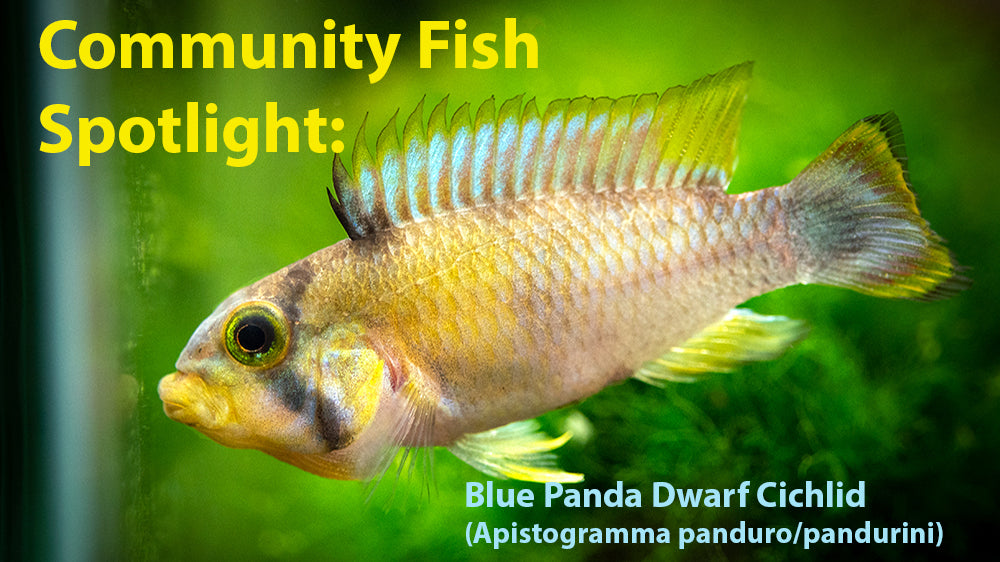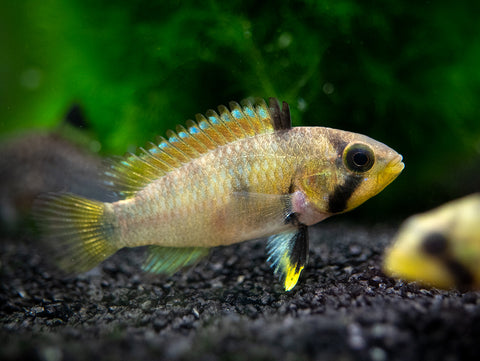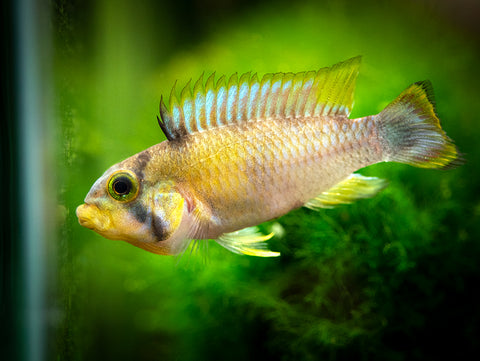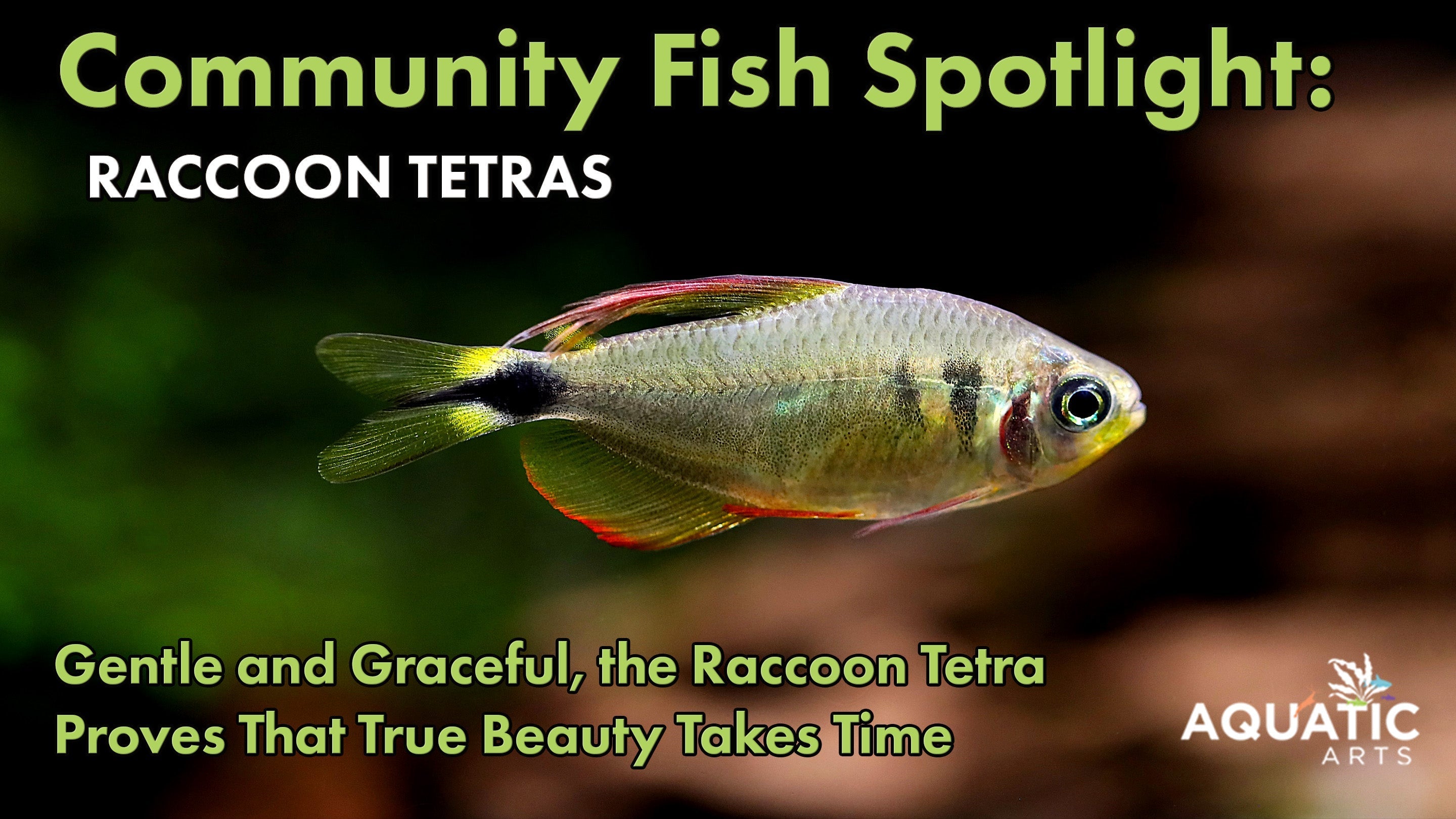Community Fish Spotlight: Blue Panda Dwarf Cichlid (Apistogramma panduro/pandurini)

Unveiling the Aquatic Jewel: Dive into the Enchanting World of Blue Panda Dwarf Cichlids
Introduction: Discovering the Blue Panda Dwarf Cichlid
In the vast and ever-evolving world of freshwater aquariums, enthusiasts are continually on the lookout for vibrant and unique species to grace their aquatic havens. Amidst this quest for distinction and beauty, one particular gem shines brightly—the Blue Panda Dwarf Cichlid. Renowned for its mesmerizing appearance and captivating demeanor, this diminutive yet alluring aquatic creature holds a special place in the hearts of aquarists worldwide. Join us as we embark on an exhilarating journey into the depths of the underwater realm, where the Blue Panda Dwarf Cichlid reigns supreme, enchanting all who dare to explore its fascinating world.
Appearance and Characteristics: A Visual Delight
The Blue Panda Dwarf Cichlid is a visual delight, boasting vibrant blue hues and intricate patterns that immediately captivate the observer. Its petite stature adds to its charm, making it an ideal choice for community tanks. With a maximum size of around 2 inches, these cichlids bring a burst of color without overwhelming the tank's aesthetics.

Variety in Coloration: While the Blue Panda Dwarf Cichlid is known for its blue coloration, it's worth noting that there can be variations in hues and patterns among individual specimens. Some may exhibit more intense blues, while others may have subtle variations or even hints of other colors like red or yellow.
Behavior and Temperament: A Peaceful Addition
Known for their peaceful demeanor, Blue Panda Dwarf Cichlids are excellent additions to community tanks. They coexist harmoniously with a variety of tank mates, including small tetras like Neon Tetras and peaceful bottom-dwellers like Corydoras catfish. Their gentle nature ensures a tranquil environment, making them suitable for both beginner and experienced aquarists.

Social Structure: In their natural habitat, Blue Panda Dwarf Cichlids exhibit complex social behaviors, forming hierarchical structures within their groups. Understanding these dynamics can help aquarists create a more enriching environment for their fish.
Habitat and Tank Requirements: Creating the Perfect Environment
To replicate the natural habitat of Blue Panda Dwarf Cichlids, aquarists should focus on creating a lush and inviting environment. Incorporating live plants such as Java Fern, Anubias, and Amazon Sword provides shelter and enhances water quality. Ceramic caves and driftwood offer hiding spots and mimic the rocky crevices found in their native Amazonian streams. Adding botanicals like Catappa Leaves not only enriches the aesthetic appeal but also releases beneficial compounds into the water, mimicking the tannin-rich environment these cichlids thrive in.

Feeding Habits: While they primarily feed on small invertebrates and insect larvae in the wild, Blue Panda Dwarf Cichlids readily accept a variety of foods in captivity. Offering a diverse diet including high-quality pellets, frozen foods, and live foods like brine shrimp or bloodworms helps maintain their health and vibrancy.
Breeding Behavior: A Fascinating Journey
Breeding Blue Panda Dwarf Cichlids is a fascinating endeavor for enthusiasts. During courtship, males intensify their colors and perform intricate dances to woo females. Once a pair forms, the female lays eggs on a flat surface, often a broad leaf or flat rock, while both parents guard the nest vigorously. Witnessing this parental care is not only rewarding but also provides insight into the natural behaviors of these captivating fish.

Territorial Behavior: Despite their peaceful nature overall, male Blue Panda Dwarf Cichlids can display territorial behavior, especially during breeding periods. Providing ample hiding spots and dividing the tank with decorations can help mitigate aggression and create distinct territories within the aquarium.
Enhancing Your Aquatic Oasis
In conclusion, the Blue Panda Dwarf Cichlid brings a touch of elegance and tranquility to freshwater aquariums. Their striking appearance, peaceful temperament, and fascinating breeding behavior make them a prized addition to any aquatic landscape. By recreating their natural habitat and providing attentive care, aquarists can enjoy the beauty and allure of these enchanting fish while creating a harmonious environment for all inhabitants. Dive into the world of Blue Panda Dwarf Cichlids and elevate your aquatic oasis to new heights of splendor.
Detailed care information Click Here.
Q&A Section
Q: Could Blue Panda Dwarf Cichlids live with other dwarf cichlids like Rams or Apistogrammas?
A: Compatibility with Other Dwarf Cichlids: Blue Panda Dwarf Cichlids can coexist with other peaceful dwarf cichlids such as German Blue Rams (Mikrogeophagus ramirezi) and other Apistogramma species. However, it's essential to monitor their behavior and ensure adequate space and hiding spots to prevent territorial disputes.
Q: What is the smallest recommended tank size for a group of Blue Panda Dwarf Cichlids?
A: Minimum Tank Size: The smallest recommended tank size for a group of Blue Panda Dwarf Cichlids is a 20-gallon aquarium. Providing ample space is crucial to accommodate their territorial behaviors and ensure optimal water quality.
Q: What common illnesses or diseases do Blue Panda Dwarf Cichlids get?
A: Common Illnesses: Like many freshwater fish, Blue Panda Dwarf Cichlids are susceptible to common illnesses such as ich (Ichthyophthirius multifiliis), fin rot, and bacterial infections. Maintaining a clean environment, proper nutrition, and regular water changes can help prevent these ailments.
Q: What community fish should I not house with Blue Panda Dwarf Cichlids?
A: Incompatible Tankmates: While Blue Panda Dwarf Cichlids are generally peaceful, they may exhibit aggression towards certain tankmates. Avoid housing them with aggressive or fin-nipping species such as Tiger Barbs or large, boisterous fish like Oscars, as they may stress or injure the cichlids.
Q: Could Blue Panda Dwarf Cichlids live with nano inverts like Neocaridina shrimp, or other small invertebrates?
A: Compatibility with Nano Inverts: Blue Panda Dwarf Cichlids can usually coexist with nano invertebrates like Neocaridina shrimp and other small, peaceful species. However, it's essential to provide adequate hiding spots for the inverts and monitor the cichlids' behavior to ensure they do not prey on the shrimp or other small invertebrates.




